MercoPress. South Atlantic News Agency
Tag: Inflation
-
Tuesday, July 10th 2018 - 07:08 UTC
Brazilian truckers strike had a strong impact on June inflation
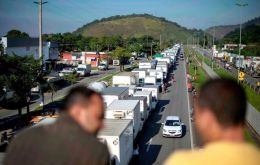
Product shortages due to a truckers' strike lifted Brazil's inflation rate near the midpoint of the official target range in June, underlining the deep impact of the nationwide protests. Consumer prices tracked by the benchmark IPCA index rose 4.39% in the 12 months through June, government statistics agency IBGE said.
-
Thursday, June 14th 2018 - 08:13 UTC
Fed raises basic rate to 2%; anticipates further increases amid strong economic growth
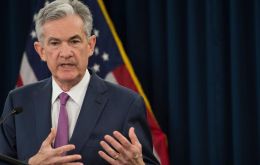
The US Federal Reserve raised the benchmark lending rate on Wednesday, the second increase of the year, and signaled it will be more aggressive about rate increases this year and next amid “strong” economic growth. The unanimous vote brings the federal funds rate to a range of 1.75 to 2%, but the quarterly economic forecasts show central bankers now expect the rate to end the year at 2.4% rather than the 2.1% projected in March.
-
Saturday, June 9th 2018 - 08:29 UTC
Brazilian consumer prices climb 0.4% in May; impact of truckers strike and fuel prices expected in June
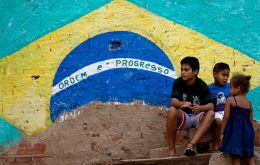
Brazil's 12-month inflation accelerated in May from April amid strong fuel prices. Consumer prices rose 0.40% in the month, compared with an increase of 0.22% in April, statistics agency IBGE said on Friday. The consumer price index advanced 2.86% in May from a year earlier, up from April's 2.76% pace.
-
Sunday, May 20th 2018 - 13:15 UTC
Venezuela: Proselytism, pro-government advantage and hunger on the eve of the presidential election; the crisis gets worse
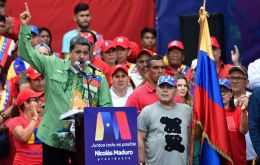
A few hours before the presidential election of May 20 in Venezuela, which is not recognized by dozens of countries in the region and is classified as “fraud” by the opposition of that country, official statements and messages favorable to the candidate and current president , Nicolás Maduro, have flooded the programs of the open media in Venezuela, according to a report by the Press Institute and Venezuela Society (IPYS).
-
Thursday, May 17th 2018 - 09:10 UTC
The dollar falls in Argentina while in Uruguay the rise “does not worry”
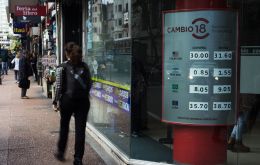
The recent rise of the dollar in Argentina had some impact in Uruguay, where it has an accumulation of 7.4% in May. However, for the president of the Central Bank of Uruguay, Mario Bergara, the escalation only owes 20% to the exchange rate in Argentina and rather considers that Uruguay is accompanying global trends.
-
Monday, May 14th 2018 - 08:20 UTC
The Economist: Will Argentina's woes spread?
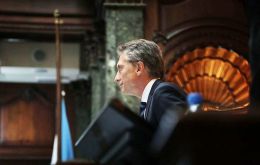
Argentina has much in common with yesterday's emerging markets, but little in common with today's
-
Friday, May 11th 2018 - 08:50 UTC
Brazil inflation in April below official target; another interest rate cut expected

Brazil's inflation rate unexpectedly slowed in April and kept far below the official target, suggesting a recent period of currency weakness is unlikely to keep the central bank from cutting interest rates next week.
-
Thursday, May 3rd 2018 - 08:39 UTC
Lack of investor confidence sees the Argentine Peso fall 3.11% against the dollar
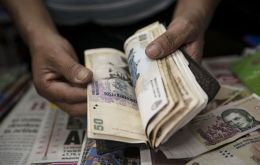
Argentina’s peso currency closed down 3.11% on Wednesday at an all-time low of 21.2 per U.S. dollar, even as the central bank continued selling dollars to try to halt the slide of the local currency, traders said. The currency’s sustained weakening showed a lack of investor confidence in Latin America’s third largest economy, which is blighted by one of the world’s highest inflation rates.
-
Wednesday, April 25th 2018 - 08:46 UTC
Argentina central bank holds benchmark rate at 27.25%; economy expands 4.7% in first two months

Argentina’s central bank held its benchmark interest rate at 27.25% on Tuesday, reiterating in a statement that high-frequency indicators suggested core inflation would remain high in April, but below March levels.
-
Wednesday, April 11th 2018 - 09:11 UTC
March inflation in Brazil almost flat at 0.09%; Selic rate expected to be cut 25 extra points in May
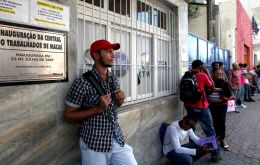
Brazil's monthly inflation rate slowed dramatically to a nine-month low in March, suggesting the central bank may have been too slow to signal another interest rate cut as the data continued to fall short of its inflation target.
